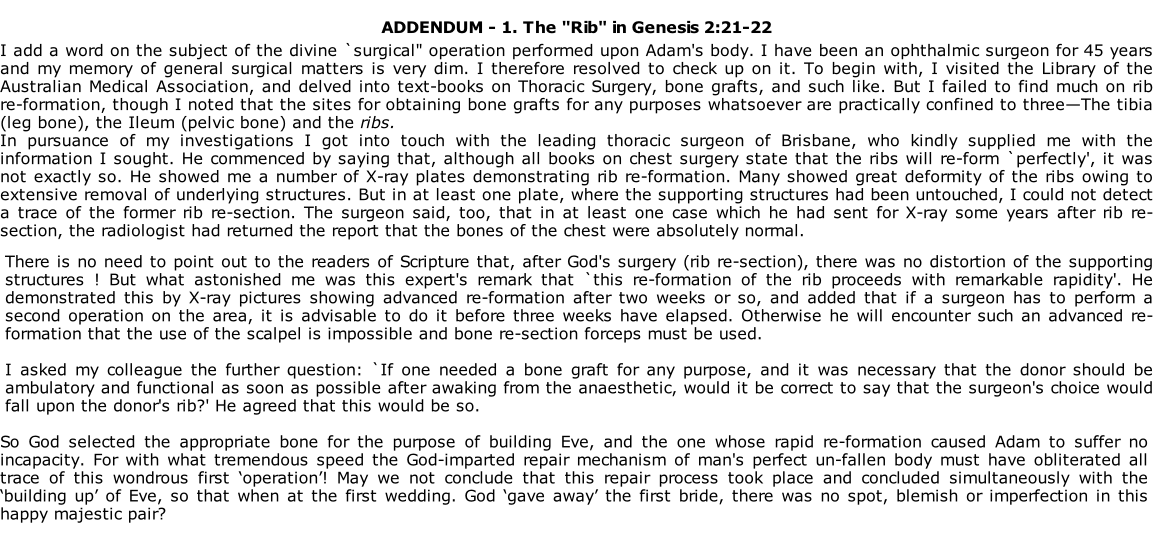
Welcome to my site for preachers

We notice that in verse 2 the disciples attribute his condition either to the sin of his parents or to his own sin. Our Lord says his condition is NOT due to his parents’ sin, or his own. It was not due to disease, therefore, It was NOT a case of congenital Syphilis, for example. The condition existed “that the works of God should be made manifest in him” This phrase immediately reminds us of God’s works of creation recorded in Genesis 1 and 2. More than this our Lord reminds us of these days of Creation when He says, “I must work the works of Him that sent Me, while it is day, the night comes when no man work. As long as I am in the world, I am the Light of the World”. (v4)
2. The healing of the man blind from his from his birth (John 9:1-
We must remember that it was Christ who spoke these words, of whom it is written in John 1. "In the beginning was the Word, and the Word was with God, and the Word was God . . . all things were made by Him; and without Him was not anything made that was made." So that when we read in Genesis 2:7 that the Lord formed man (Adam) out of "the dust of the ground, and breathed into his nostrils the breath of life, and man became a living soul", it was the same Christ who had created Adam before whom the blind man stood.
This gives point to the words of verse 6 in John 9. "When He had thus spoken, He spat on the ground and made clay", for spittle is what comes from a man's mouth just as words do, and breath does, and clay is that on which the Word operated, when man was formed on the sixth day. But, before dealing with this wonderful work of creation at the Pool of Siloam, we might ask ourselves what was this man's condition of blindness due to?We must remember that it was Christ who spoke these words, of whom it is written in John 1. "In the beginning was the Word, and the Word was with God, and the Word was God . . . all things were made by Him; and without Him was not anything made that was made." So that when we read in Genesis 2:7 that the Lord formed man (Adam) out of "the dust of the ground, and breathed into his nostrils the breath of life, and man became a living soul", it was the same Christ who had created Adam before whom the blind man stood.
This gives point to the words of verse 6 in John 9. "When He had thus spoken, He spat on the ground and made clay", for spittle is what comes from a man's mouth just as words do, and breath does, and clay is that on which the Word operated, when man was formed on the sixth day. But, before dealing with this wonderful work of creation at the Pool of Siloam, we might ask ourselves what was this man's condition of blindness due to?
It was NOT due to disease. It WAS most certainly developmental, for he was born thus. Ida Mann, in her book, DevelopmentalAbnormalities of the Eye, says "a developmental abnormality of the eye is called congenital when it appears before birth". So, this was a Congenital Abnormality of both eyes, causing blindness. Since it was NOT due to disease, it must have been due to arrest of the normal development of the eyes. It was a case of Anophthalmia (absence of eyes) or possibly, Microphthalsnia, in which extremely minute rudiments of the globe are found. In these cases, which are rare, "There is no vestige of an eye" (Ida Mann). The condition is generally divided into Primary and Secondary Anophthalmia. The Secondary need not trouble us for it is associated with the gross abnormalities of the face and brain (the children seldom survive), which was evidently not present in this case. This man was a case of Primary Anophthalmia. Ida Mann quotes authorities saying that in a typical case no other defect is present. She quotes Collins as stating that "with regard to the rest of the individual, in most cases, there were no other abnormalities". I give these extracts because this man displayed a mental alertness and penetration which were conspicuously absent in the case of the Pharisees!
But what I wish to stress is that this is not a miracle of healing. It is a CREATION of two organs, previously absent from this man's body. Not only so, it was the creation of the most wonderful sense organs found in man. This is not the place to dilate on the marvels of the human eye, of the photo-
This is a demonstration of "the works of God" : the work of God in making man, in this instance (Genesis 2 : 7). From it we learn that God and Christ made man directly from the clay without ancestors! exactly as Christ created these most marvellous organs in this case.
In verse 32, the Holy Spirit records the words of the once blind man: "SINCE THE WORLD BEGAN was it not heard that any man opened the eyes of one who was born blind". How right he was, any ophthalmic surgeon will testify!
But notice the words, "Since the world began". It was at the beginning of the world that God created Adam and his eyes directly from the clay. Ever since then, the bodies of countless millions of the human race have been built up indirectly during gestation by nutriment supplied by the mother, and afterwards by nutriment supplied by the digestion of food taken in by the mouth.
But here was a case where God had returned to the method used "WHEN THE WORLD BEGAN" CREATION FROM THE DUST OF THE EARTH.
We cannot say whether the Lord Jesus used the atoms of the sixteen elements present in that lump of clay as the material basis of the living cells of the man's eyes. But, if He did not, He created them from nothing and thus formed instantaneously these two marvellous organs. When subsequently Jesus found him, He asked the man, "Dost thou believe on the Son of God?" Then the man says, "Who is He, Lord, that I might believe on Him? And Jesus said unto him, Thou hast both seen Him and it is He that talketh with thee. And he said, Lord, I believe. And he worshipped him". Notice that Jesus asked him, "Dost thou believe on the SON OF GOD?" He does not here designate Himself as the Messiah or the Christ, nor as the Son of Man, but as one with God, as the second Person in the Trinity. He uses this Name because in this case He had made manifest a work of God in creation. He had acted here as the ONE "without whom was not anything made that was made”. The once blind man instantly perceived the force of this claim, for he was himself the living demonstration of its truth, and he at once bestowed on Christ the worship justly due to Him as God the Son. The Holy Spirit in God’s Word has given us this example of the way God created man at the beginning “when the world began”. To attempt to thrust into God’s Word the brutal and cruel theory of evolution is to contradict flatly the plain teaching of God’s Word in this and many other passages. It dishonours God, degrades man, and grieves the Holy Spirit.In verse 32, the Holy Spirit records the words of the once blind man: "SINCE THE WORLD BEGAN was it not heard that any man opened the eyes of one who was born blind". How right he was, any ophthalmic surgeon will testify!
But notice the words, "Since the world began". It was at the beginning of the world that God created Adam and his eyes directly from the clay. Ever since then, the bodies of countless millions of the human race have been built up indirectly during gestation by nutriment supplied by the mother, and afterwards by nutriment supplied by the digestion of food taken in by the mouth.


| Powerpoint 2 |
| PowerPoint 3 |